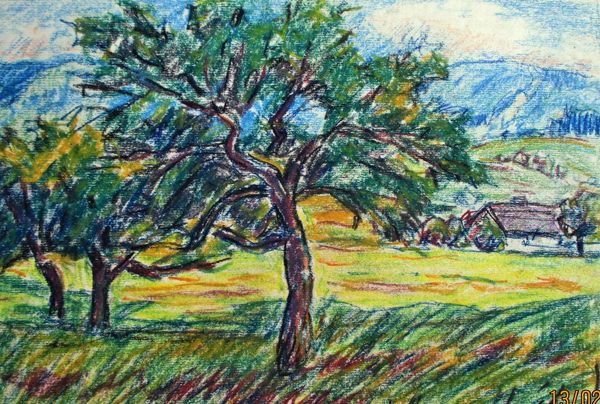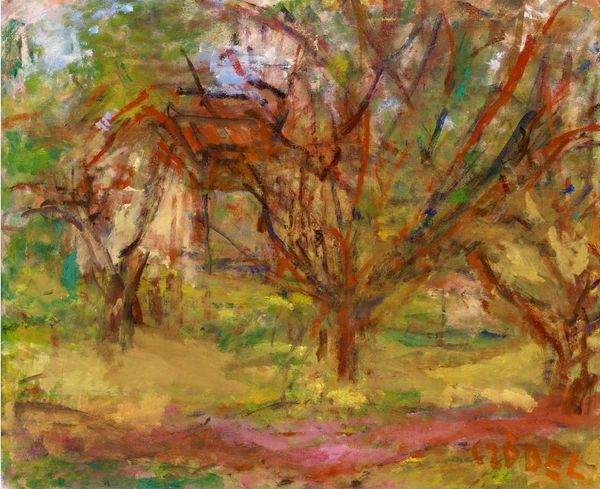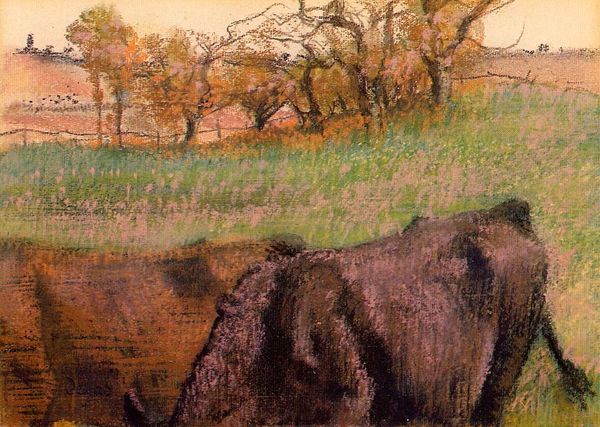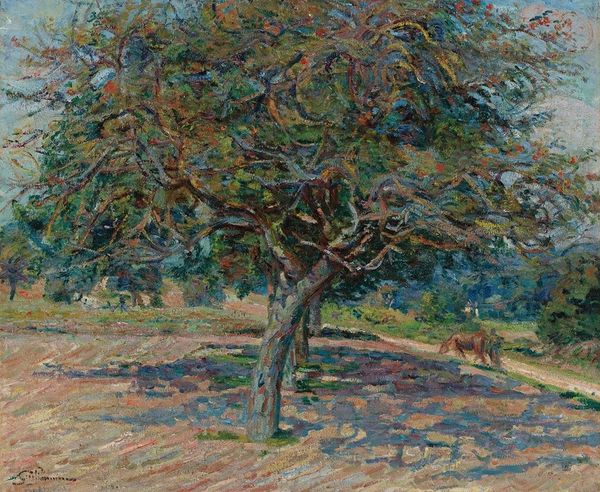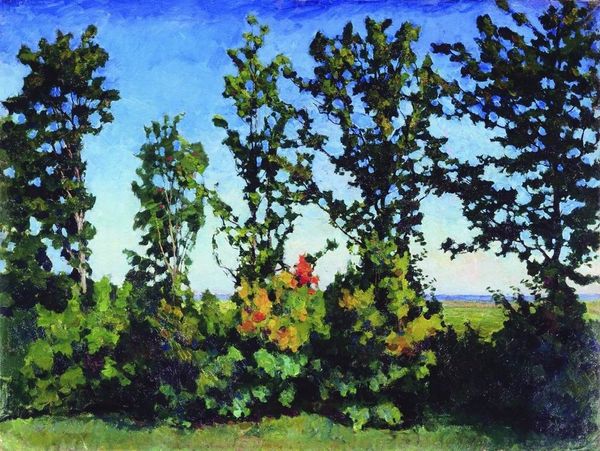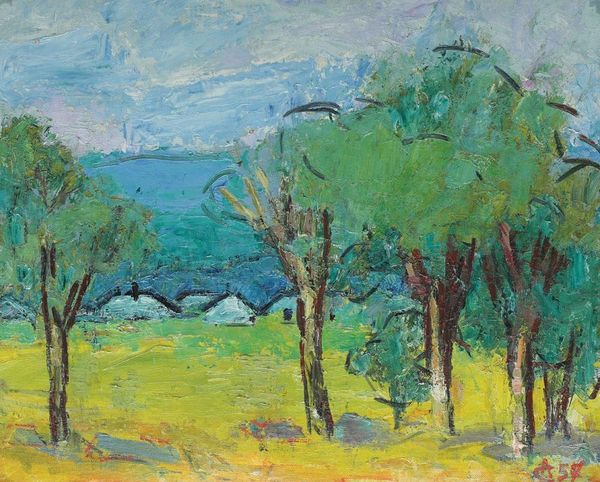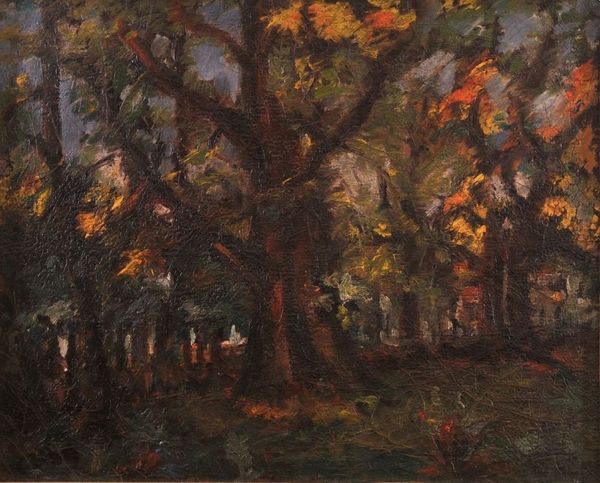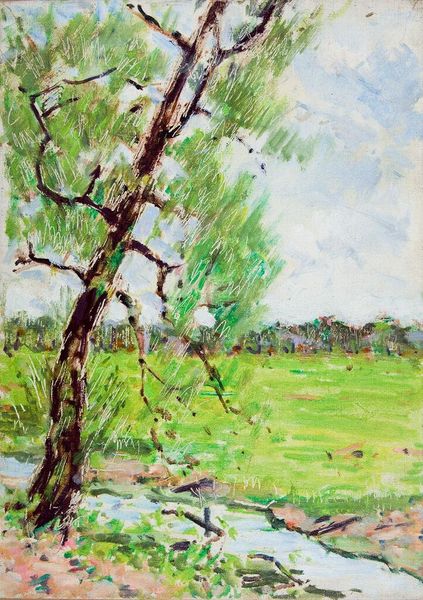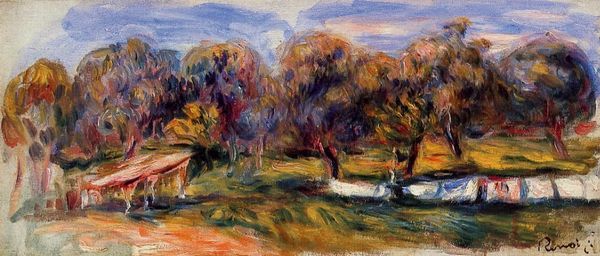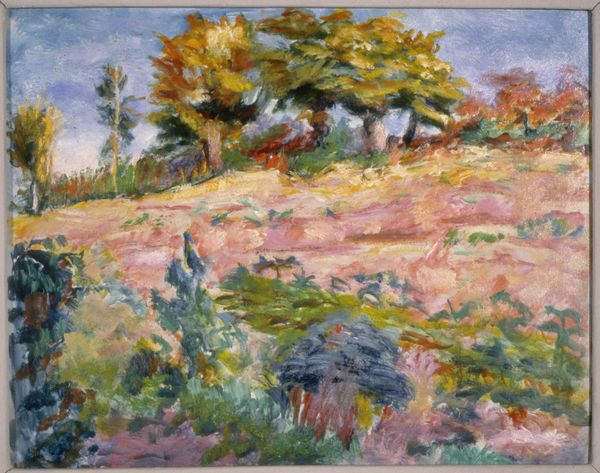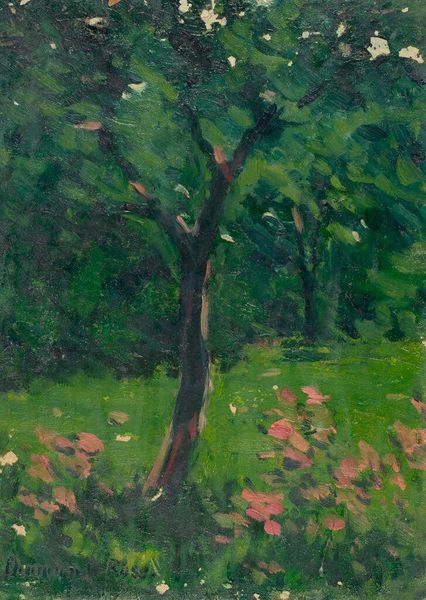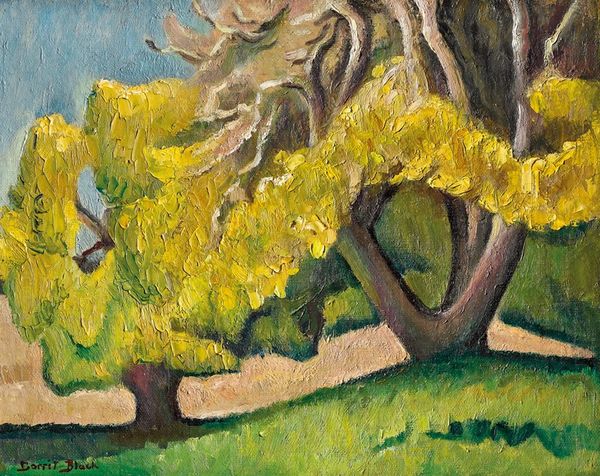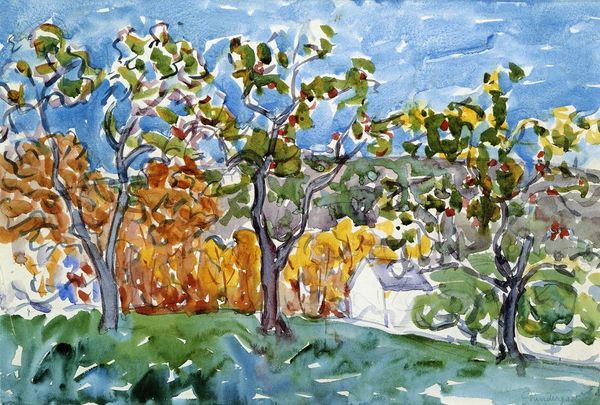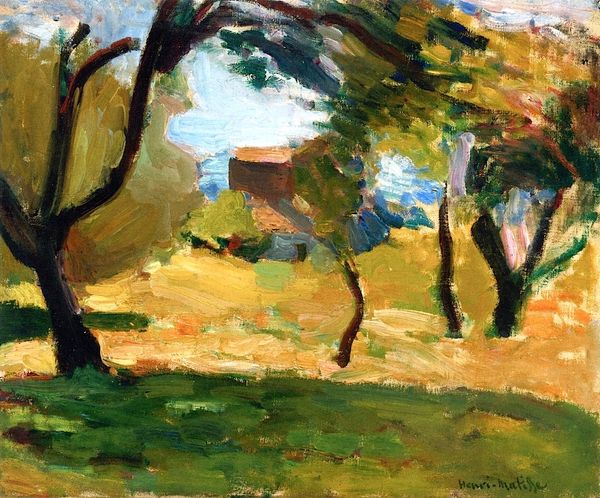
painting, plein-air, oil-paint, pastel
#
tree
#
painting
#
impressionism
#
impressionist painting style
#
plein-air
#
oil-paint
#
landscape
#
impressionist landscape
#
oil painting
#
plant
#
pastel
#
watercolor
Copyright: Public domain
Editor: This is Claude Monet's "Fruit Trees," painted in 1874. It's done in oil paint, probably en plein air. It strikes me as very informal; the composition is a bit rough, even for impressionism. What do you see in this piece, looking beyond the subject matter? Curator: Indeed. Observe how Monet deploys colour here: the juxtaposition of verdant foliage against the azure sky is quite deliberate. The texture achieved through visible brushstrokes is integral to understanding his visual language. Consider, too, the composition; the trees aren’t neatly arranged, but are presented in a manner that guides the eye into depth through subtle colour variations. Editor: So, it's not just about painting pretty trees. It's about how he is representing them. The brushstrokes make the scene look almost alive. Is he aiming to create something that merely imitates a scene from nature? Curator: Precisely. The seemingly haphazard arrangement possesses an underlying structure—a rhythmic interplay of light and shadow achieved through the deliberate application of paint. How does this depart from traditional landscape paintings which tend to be a smoother finish? Editor: I see, the looseness isn't just casual, but contributes to an overall sense of movement and ephemerality; it's less about accurately depicting individual fruit trees and more about capturing a fleeting impression. Curator: Precisely. This highlights a crucial shift away from meticulous representation towards conveying sensory experience through form, colour, and composition alone. What does this signify? Editor: This approach to landscape painting underscores the very core tenets of Impressionism; that it prioritized visual perception and translating such to a painting rather than academic perfection or faithful mimesis. The artist, through deft manipulation of materiality, challenges our conventional notions on how nature may be perceived or indeed represented. Curator: Exactly. It’s rewarding to observe the capacity that close analysis grants, transcending simple aesthetic appreciation for deeper cognitive and artistic understanding.
Comments
No comments
Be the first to comment and join the conversation on the ultimate creative platform.
